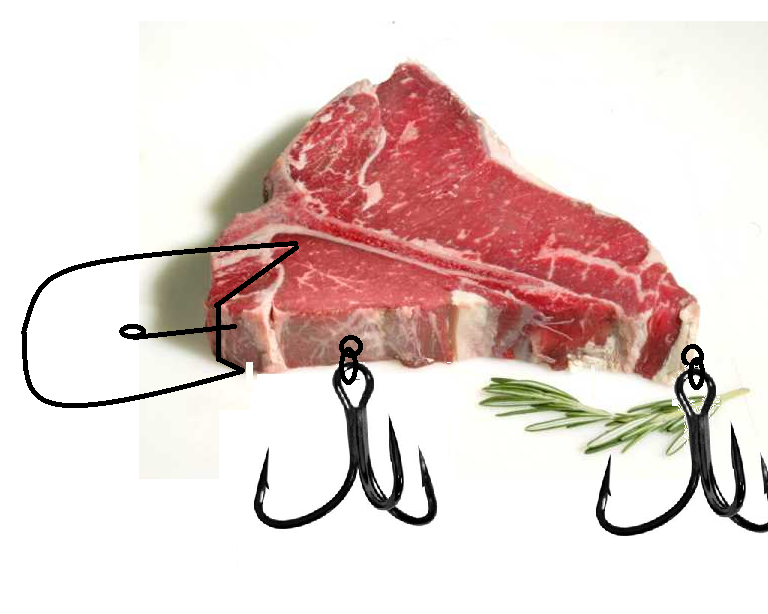-
Posts
833 -
Joined
-
Last visited
-
Days Won
6
Content Type
Profiles
Articles
TU Classifieds
Glossary
Website Links
Forums
Gallery
Store
Posts posted by A-Mac
-
-
Has anyone tried the Lowes or Home Depot sealers? It doesn't look like GST is available except at Menards.
-
I talked to a body shop asked what to use to paint chrome.I have nevr had any luck it always looked like sprayed aluminium. here is what they told me,you can spend a ton but if you take glossy black rustoleum spray that on first to a high shine then after its dry spray on Dupli-color chrome and does it ever look good I then paint over with the colors that im using on the lure. I have been painting clown pattern and it looks real good.
Can you post a pic? I'm curious to see how it looks.
-
Keep this up Mark, you may wind up with your own gallery topic!
Hobby knifes and sandpaper are ok, but I stray away from power tools when the PBR case or rum 'n' coke is cracked.
I have a 4 beer limit with airbrushing too, otherwise that just gets ugly in a hurry.
When clear coating, it seems I need to be sober for 3 days straight to get that right... and then bust out the hard stuff when the paint wrinkles on that "one of a kind" perfect paint scheme.
-
I've read about Aaron Martens insulating his bass boat lids to reduce temps in the compartments. As soon as I find a suitable material, I plan to do the same.
-
Thanks for the update! Looking forward to how it sticks to the edges. Solarez was an epic fail on edges.
-
I know this refers to paint more-so, but I remember seeing this in the last couple weeks.
I've been meaning to try this, but haven't yet. I saw in a you tube video of a guy making scale patterns in foil by laying a square sheet of aluminum over a wire mesh (looked like a metal, but I'm sure a plastic mesh would work). He rubbed the scale pattern into the foil before putting it on the lure. Since I find it difficult to roll a pattern on resin lures (unlike balsa), I'm going to give this method a go.
-
Thanks for the replies guys. The glue I have been using is "insta bond" thick. I think the Gorilla glue is better though. However, I would appreciate it if you guys share the brand/thickness of the CA that you use.
-
That's a spectacular idea. Definitely going to do this too. Have you found a blade size (larger or smaller), type (2 or 3 blade), or color (silver, gold, black, etc) that performs better than the other? I'm more interested in blade size to start, but I'm just curious what the bass are telling you.
-
nice work!
-
I use 19 gauge on large swimbaits and have had no issues whatsoever. However, I think a 17 or even larger can still easily be used.
-
Solarez or Devcon as your top coat on that A-Mac ?.. Lol...Nathan
Sweet Baby Ray's BBQ, makes the blood trail irresistible!
-
I just buy something big and cheap from harbor freight, like a screwdriver set! The blister packaging works great for 3d stencils. Heck, you get 20% off and a free multi-meter or flashlight with it too!
-
I'll take a dozen and make 'em medium rare.



haha, it took 4 minutes to catch the first angler! ICAST 2014!
-
-
Will the soft temper wire hold up to a rotating head musky lure, I use .061 now but bending for the final loop is hard to do but I get it done. So the question is what temper would you use inplace of the SS .061 to make bending a little easer.
Wayne
If you click on the link from my first post, it will bring up their (bend-and-stay) soft temper wire. It seems they have a size slightly smaller and slightly larger than what you are currently using. They have several types, some resist bending more. I've never successfully caught a musky. I've had a couple good ones on, but they make quick work of bass gear.
-
I purchased some 0.025", 0.032", and 0.041" wire. The 0.032" is perfect. It twists well too. The 0.025" might not be bad for very small lures, but the 0.032" is still the one to have. I haven't used the 0.041", but it is a lot closer to the size of the 19 gauge national wire I was buying previously (so still not a bad thing).
-
That bait is sweet. It looks like the fish is hemorrhaging and provides all the more reason for a bass to crush it. Since it is in small doses, I'd say it is a major plus!
-
Blue threadlock is designed to break free with hand tools. The red is way tougher... You usually have to have a torch of some sort to loosen that stuff...
The blue had no bond at all, but if I happen to see red while I'm out I may give it a whorl.
-
Alright, despite my stubbornness to change. Drilling the hole larger than the screw and just filling the hole up with glue is the way to go. The twist test proved successful so far with this method.
-
Threadlocker blue didn't work at all.
I'm thinking since the hole was only large enough to thread the screw in that there wasn't enough glue on the threads to prevent it from turning. I'm going to try drilling a slightly larger hole about half the length of the eyescrew into the previous hole and then fill the gap with super glue. This way I can have the best of both worlds and have half of the screw threaded and the other half loaded with glue.
-
I've read the Zap Gap glue is supposed to be very good, but its pretty expensive for ca glue. Do you think the Zap Gap brand is better than other CA glues? In other words, is it worth buying over something like Gorilla Super glue?
Also, from my past experience with PVC, I remember CA glue working incredibly well on the eye screws. I'm not having any screws pull out by any means, but if I'm making major adjustments to the eye screw when tuning (like if I don' initially have it seated with the eye perfectly vertical) I've noticed that the screw will break free and turn (in resin lures). I make the eye hole so that the eye screw threads in. You can't pull it out, even without glue, but it will pivot if the bond is broken which can throw the lure out of tune.
This is why I was asking about threadlocker red. I've never heard of it being used on plastic. I like using a syringe and needle to inject ca glue, and would prefer to not go the epoxy route.
I have some threadlocker blue, so I'll give that a whorl. And see if it does anything.
-
Has anyone ever tried a threadlocker (red in particular) with eye screws in resin? I was looking for a glue (other than a 2 part epoxy) that would resist twisting of eye screws. CA glue is tough and easy to apply with a syringe and needle, but the bond will break if the screw is torqued.
-
He emailed me back. He said to make sure we get 30% acrylic. lol he also is looking forward to a lure!
Awesome. This shows how valuable hand crafted lures really are! Anxious to hear how this stuff turns out.
-
Are you guys using it over wood, resin, or PVC?
I'm just a hobby builder, but I haven't had any failures on my PVC baits since I've been using it.
resin






Gst International Lacquer Based Concrete Sealer As A Topcoat
in Hard Baits
Posted
Just curious about the glossiness.
How would you compare it among these (IMO)
1 (glossiest)- epoxy
2 - Dick Nites
3 - (least glossy)- Solarez
Cougarftd- did you dip?